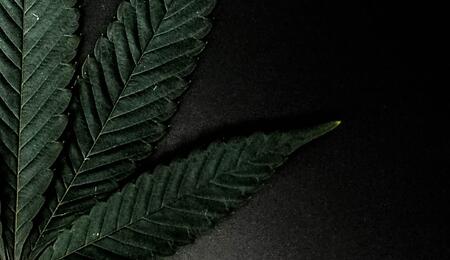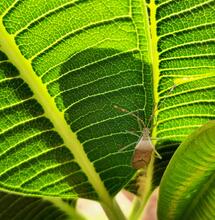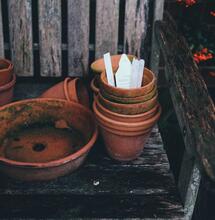Understanding Indica Cannabis

There are so many strains available on the market, that the choice between indica, sativa and hybrid varieties of cannabis than ever before. As a newcomer to the cannabis scene, there can be some confusion about the heritage, characteristics, and effects associated with indica cannabis. Below is better explained the history of the indica and all things associated.
Where Do Indica Varieties Come From?
Initially found in the Himalayas and surrounding areas, indica varieties of cannabis can be found growing wild. In the Hindu Kush Mountains and Pakistan, full-blooded indicas which have stood the test of time, have adapted to the climate and ability to grow in the terrain. Purveyors of seeds were responsible for bringing back seeds found inside original landraces, from the East. Sensi Seeds were one of the first seed banks to offer Afghani #1 on their books, as well as some of the first Hindu Kush genetics.
Since that time, indica varieties such as Pakistan Citral and Aghani, have been used in creating some of the modern day flagship strains. In these regions, the weather at night can be cold, so naturally, indica cannabis plants will have a typically higher resistance to more challenging climate. They also seem to be well suited to mould, mildew and insect attacks, due to their natural environment.
Typically an indica will grow will a short and stocky structure, with very little internodal spacing during the growing stages and pre-flowering stage. The fan leaf of an indica will be thick-fingered, wide in appearance and with minimal spacing between the blades of each leaf. When growing out indica dominant strains, growers can sometimes remove stubborn fan leaves that block any extra light from the lowest parts of the plant. When flowering an indica, they will not stretch a great deal making them an excellent choice for beginning growers, or anyone with limited height.
Flowering times can range from 45-55 days for a 100% indica, which is why they are perfect for growers with short summers, or for those who desire as many indoor cycles as possible, with the fastest turnaround time logistically possible. The bud structure of an indica will be smaller sized, dense buds, which fill each internode. Indicas will grow multiple side branches so you can expect quality lower and top buds.
Medicinal Properties And Breeding Blocks
Medical patients who are looking for a physical sense of relief will look to indica cannabis. Known for anti-inflammatory properties, as well as the ability to reduce swelling, aches, and pains, reduce tremors, pain, and discomfort associated with arthritis, relieve symptoms of glaucoma, ease anxiety, insomnia and dramatically increase appetite. Many patients will find that indica dominant strains will help with therapeutic effects, over sativa or hybrids.
Sativa cannabis is excellent for increasing energy levels, focus, motivation, combatting nausea and sickness and depression. For pain relief, indica cannabis is better suited, and as more research and development is done into cannabinoids, we are learning more about CBD and how that plays a significant role with THC, as well as other cannabinoids and terpenes that are present in the plant.
The two sides of the scale when it comes to cannabis is indica and sativa. In between is what is known as a hybrid, which is a blend of indica and sativa genetics. Dependant on which the father plant was, hybrids will usually be more dominant in one or the other. As far as breeding is concerned, using a full-blooded indica from Afghanistan or Pakistan is the best route to go. Creating a first generation cross of your best Afghani father with your best sativa will result in hybrid vigour and excellent stability, as far as how far gone the lineage is.
Many breeders now days will cross with the latest hype strain, only to discover the offspring that they produce is terrible for breeding. Almost all of the best strains that we grew up smoking and reading about came from extensive breeding programmes in Holland and California. At that point, the genetic tree was not watered down as much as it is now, so that is proof in itself, that 100% indica strains make excellent building blocks.
Who Are Indicas Better Suited For?
There are many advantages to growing indica varieties of cannabis. Some of these are the easy-to-grow factor, quick flowering times, short stature, high resilience to cold weather and medicinal properties. Growers in Northern Europe will find that plant an indica strain in Spring will allow for a good, healthy harvest by mid-September.
Growing out anything that is sativa dominant will only be a disappointment, as the flowers will not swell up and ripen correctly. If you experience wet winters, with cold nighttime temperatures, then indica strains will have the best chance of withstanding attacks from mould and mildew.
You can achieve incredible results quality-wise growing indica varieties in the Mediterranean, however, as a worst case scenario with the right nurturing, you can also expect great results living in Northern Europe As far as plant training goes, indica strains are quite limited due to their characteristics.
A Sea of Green is most often the best choice for indica strains, Attempting to SCROG an indica dominant strain will not be as effective as working with a sativa dominant hybrid, or sativa. When growing out naturally in the wild, Aghani strains will grow uniform with minimal variation in height, aroma, flavour, and potency.
The Flavour And Aroma
The very first landrace strains that were taken back from Afghanistan became known for a pungent, musky, gassy aroma, which has a similar taste, perhaps not so appealing as far as terpenes and fragrances go. The Pakistan landraces became known for their pungent fragrance also, with a background of citrus. This is how the Pakistan landraces became known as Pakistan Citral; however, the flavour of a Pakistani Citral is more pleasant than the original Afghani.
The sweetest tasting and more floral of the indica varieties is the Hindu Kush strain. These plants will have a musky, fruit, cherry background with a soft, fruity aftertaste. Many breeders have taken the time to backcross these indica strains to produce a new mix of flavours, aroma, terpenes, and effects.



.png)